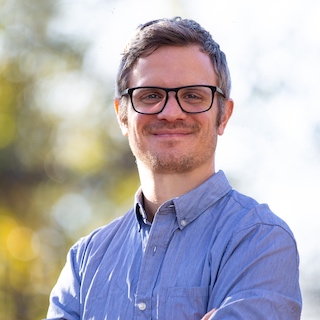“WITH YOUR SUPPORT, WE CAN BRING NEW THERAPIES TO PATIENTS FASTER. COMING FROM A MORE EPIDEMIOLOGICAL BACKGROUND, I AM VERY INTERESTED IN THE TRANSLATIONAL POSSIBILITIES IN THE NYC AREA, AND TO EXPLORE WHAT THE ROLE OF METABOLOMICS COULD BE IN THIS ENVIRONMENT.”
Welcome, Dr. Jan Krumsiek, Assistant Professor of Physiology and Biophysics in the Department of Physiology and Biophysics, and the newest member of the Englander Institute for Precision Medicine. Previously a visiting fellow in the Leandro Cerchietti lab, Dr. Krumsiek answered a few quick questions to elaborate on his experience and interests.
Please provide a brief overview of your work before Weill Cornell Medicine.
I have specialized in bioinformatics methods for omics research, with a particular focus on metabolomics data. To this end, I have been developing methods for network and pathway analysis to elucidate mechanisms of underlying pathophysiological conditions. The focus of my work has been mainly in the area of diabetes research (both type 1 and type 2 diabetes) at the Helmholtz Center Munich, where my team and I have developed a pathway-based understanding of the regulated metabolic processes between health and disease. Moreover, I have extensively worked on advancing machine learning methods to identify patient subgroups using molecular signatures derived from omics profiles. As an example of the impact we created, we developed a genetic risk score for type 1 diabetes in collaboration with clinical colleagues, which is now being evaluated for implementation in a large Bavarian screening as part of the ‘Fr1da’ study.
What makes your research unique? Can you share with us some recent findings?
In our work, we inferred novel pathway interactions from the omics data using statistical methods. One of our major findings was a surprisingly accurate signature of a variety of metabolic pathways in human blood, which was far beyond blood’s known role as a transport and waste system for metabolic products. These signatures are so strong and accurate that they allow for the prediction of previously unknown biochemical reaction steps. We have showcased this approach, followed by experimental validation, in several previous publications. For example, we identified and validated a set of reactions in the synthesis of IgG-attached glycans that had historically been considered to be biochemically impossible.
What excites you about your work?
The daily challenge of interfacing between computer sciences and biomedicine is a major motivator for my work as a scientist. We bridge the gap between mathematics, statistics, computational approaches and biology and medicine. Coming from a more epidemiological background, I am very interested in the translational possibilities in the NYC area, and to explore what the role of metabolomics could be in this environment.
When thinking about your research and the field you are working in, what are some recent breakthroughs that are propelling the field forward and how will they impact healthcare?
All omics technologies are rapidly evolving, making them faster and cheaper to use. While sequencing-based technologies are readily being used in clinical practice, mass spectrometry-based approaches are still mostly found in fundamental research. We will explore possibilities to bridge the gap to clinical research, starting with smaller pilot studies.
What are the short-term challenges that your scientific field is facing?
Metabolomics data and analysis results need to be better integrated with other omics data and data from public databases. This includes results from high-throughput omics screenings (e.g. GWAS, EWAS etc.) as well as pathway databases that include high-quality collections of what we currently know about the interaction of biological molecules. Integrating these public datasets with metabolomics measurements will be key to unlock the full potential of our own data.
What else would you like to share with Englander Institute for Precision Medicine team?
I am interested in novel projects and exchange of expertise and knowledge with colleagues from the EIPM and am very much looking forward to upcoming collaborations.


